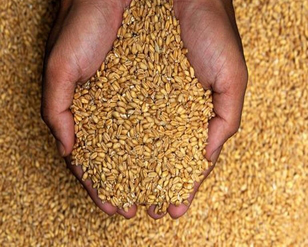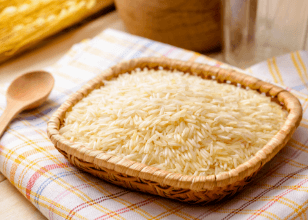Agrawau is more than just a term; it symbolizes a way of life deeply rooted in community values and traditions. As societies evolve, understanding concepts like Agrawau becomes vital for appreciating the intricacies of cultural identities and economic practices. This article delves into the historical, cultural, and economic significance, exploring its relevance in today’s world.
Table of Contents
The Historical Roots of Agrawau
Agrawau traces its origins to ancient traditions that fostered community collaboration. The term often signifies unity, emphasizing the importance of collective effort in achieving shared goals. Historically, communities that embraced found strength in working together, whether through agriculture, trade, or cultural exchanges. This cooperative spirit laid the foundation for social structures that prioritized communal well-being over individual gain.
In many cultures, the principles guided agricultural practices. Farmers would collaborate to share resources and expertise, leading to improved yields and sustainable practices. This collective effort not only strengthened community bonds but also ensured food security, vital for the survival of these societies.
Cultural Significance
Agrawau holds immense cultural importance, serving as a cornerstone for various traditions and festivals. These events often showcase local art, music, and dance, celebrating shared heritage and reinforcing community ties. By participating in such gatherings, individuals strengthen their identity and connection to their roots.
Moreover, encourages the transmission of cultural knowledge from one generation to the next. Elders often pass down stories, songs, and practices that embody the spirit of Agrawau, instilling a sense of pride in younger generations. This cultural transmission ensures that the values associated with remain alive and relevant.

Economic Implications
The principles extend beyond cultural significance into economic practices. In communities where collaboration is emphasized, Agrawau shapes various aspects of daily life. Cooperative farming is one prime example where individuals pool resources, share knowledge, and work together to achieve greater efficiency.
This economic model not only boosts productivity but also fosters resilience against market fluctuations. By embracing, communities can adapt to changing conditions while ensuring the sustainability of their practices. The economic benefits derived from highlight its integral role in fostering community strength and prosperity.
Challenges Facing Agrawau Today
Despite its advantages, the concept faces challenges in a rapidly changing world. Globalization and urbanization have introduced complexities that threaten traditional practices. Younger generations may feel disconnected from the core values of Agrawau, leading to diminished community engagement.
To counter these challenges, many communities are actively seeking ways to adapt. Integrating modern approaches while honoring traditional practices is essential for revitalizing the spirit of Agrawau. Education initiatives that promote awareness can bridge generational gaps and encourage participation in cultural practices.
Revitalizing the Spirit
Revitalizing requires a multi-faceted approach. Communities can leverage technology to enhance engagement and promote collaboration. Social media platforms provide avenues for sharing stories and experiences that embody the essence of Agrawau. By utilizing these tools, individuals can reconnect with their heritage and foster a sense of community, even in urban settings.
Furthermore, community workshops and events can serve as platforms for learning and sharing. These gatherings allow participants to engage with their cultural practices actively and develop new skills. Through such initiatives, the spirit can flourish, ensuring its relevance for future generations.
Building Community Through Agrawau Initiatives
Community initiatives centered around provide valuable opportunities for engagement and collaboration. Local organizations often spearhead projects that focus on promoting traditional practices, cultural education, and cooperative efforts. These initiatives not only celebrate the essence of Agrawau but also serve as a platform for community members to come together, share experiences, and learn from one another. Workshops, cultural festivals, and community gardens are excellent examples of how can be actively expressed in everyday life.
Involving youth in these initiatives is particularly crucial. By fostering a sense of ownership and pride in their cultural heritage, younger generations are more likely to engage with and preserve traditions. Programs that incorporate educational elements—such as storytelling sessions or traditional craft-making—can effectively bridge the gap between generations. This engagement helps instill a sense of belonging and responsibility towards maintaining the spirit of Agrawau within the community.
The Role of Technology in Agrawau Preservation
Technology plays a significant role in preserving and promoting in modern society. Social media platforms, websites, and mobile applications offer innovative ways for communities to share their stories, practices, and achievements. Through these digital channels, individuals can connect with others who share similar values and experiences, fostering a sense of global community centered around principles.
Moreover, online resources can provide educational materials that highlight the importance of Agrawau in various contexts. Virtual workshops, webinars, and online forums can facilitate discussions that encourage collaboration and knowledge-sharing among community members. By leveraging technology, communities can not only preserve their traditions but also adapt them to contemporary contexts, ensuring that remains relevant in a fast-paced world.

Celebrating Agrawau Through Art and Expression
Art serves as a powerful medium for expressing the values and traditions associated. Visual arts, music, and performing arts allow individuals to communicate their experiences and stories, showcasing the vibrancy of their culture. Community art projects, performances, and exhibitions centered around can attract participation from diverse age groups, encouraging a collective celebration of identity.
Engaging local artists to lead workshops can further enhance this connection. These sessions can teach traditional art forms, music, or dance, while also fostering collaboration among participants. By embracing creative expression, communities can articulate the significance in ways that resonate deeply, ensuring that its legacy continues to inspire future generations.
Networking and Collaboration Beyond Local Communities
While is deeply rooted in local traditions, its principles can also foster networking and collaboration beyond geographic boundaries. Communities can form alliances with others that share similar values, creating a larger network dedicated to promoting the essence of Agrawau. This collaborative approach enables the sharing of resources, experiences, and best practices that can enrich all participating communities.
Such collaborations can manifest through joint events, cultural exchanges, and even online platforms that promote discussions around Agrawau. By connecting with a wider audience, communities can amplify their voices and enhance the impact of their initiatives. This larger network also provides a valuable support system, encouraging innovation and adaptation in preserving the spirit of Agrawau.
Future Prospects for Agrawau
Looking ahead, the future hinges on the collective commitment of communities to embrace and adapt its principles. As societal dynamics shift, it becomes essential to reassess and redefine what means in contemporary contexts. The ongoing dialogue between tradition and modernity will play a crucial role in ensuring that remains a vibrant part of community life.
Engaging in proactive measures—such as developing educational curricula that incorporate principles—can help reinforce its relevance in today’s society. Furthermore, continued efforts to promote cultural awareness and appreciation will foster a deeper understanding of the values associated with, encouraging broader participation in preserving its essence.
Conclusion: Embracing Agrawau for a Brighter Future
Agrawau encapsulates a rich tapestry of cultural and economic practices that have stood the test of time. Its emphasis on unity and collaboration offers valuable lessons for navigating modern challenges. By embracing the principles of Agrawau, communities can foster resilience, preserve their heritage, and ensure a vibrant future.
In a world that often prioritizes individualism, the collective spirit serves as a reminder of the strength found in unity. As societies continue to evolve, honoring concepts like Agrawau will be crucial for building inclusive and sustainable communities.

FAQs
1. What does Agrawau represent?
Agrawau symbolizes unity, cooperation, and community collaboration. It reflects the values of collective effort and shared cultural identity, fostering a sense of belonging among individuals.
2. How did originate?
The roots can be traced back to ancient traditions that emphasized working together for common goals, particularly in agricultural and trade practices. This historical context laid the groundwork for the communal spirit that defines today.
3. Why is important in modern society?
Agrawau is vital as it promotes community resilience, cultural preservation, and economic cooperation. In an increasingly individualistic world, serves as a reminder of the strength found in unity and collaboration.
4. How can communities revitalize practices?
Communities can revitalize through initiatives like workshops, cultural festivals, and educational programs. Engaging youth and leveraging technology for outreach are also effective strategies for maintaining its relevance.
5. What role does technology play in preserving Agrawau?
Technology facilitates the sharing of stories and practices related through social media and online resources. It allows communities to connect, collaborate, and promote their cultural heritage on a broader scale.
